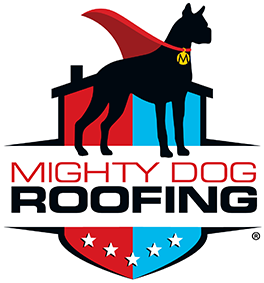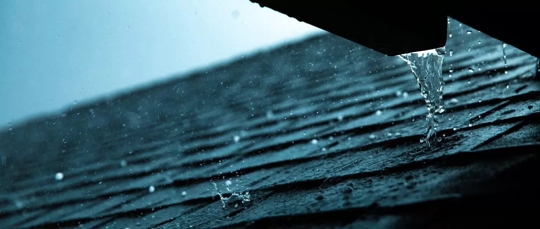What Does Hail Damage Look Like on a Roof?
Check Your Roof Regularly for Dents, Cracks, and Bald Shingles
Do you live in an area that routinely experiences hailstorms, or have you just weathered a big storm? If so, regularly checking your roof surface for hail damage is a good idea.
We'll review the primary ways to identify hail damage on a roof and provide some inside advice on dealing with your insurance company if you need to file a claim.
What Does Hail Damage Look Like On A Roof?
Hailstorm damage on roofs can take many different forms, manifesting as dents, cracks, or bald shingles.
These dents can be challenging to spot. Continue scrolling to see three photos of a hail-damaged roof.
3 Visual Examples of Roof Damage
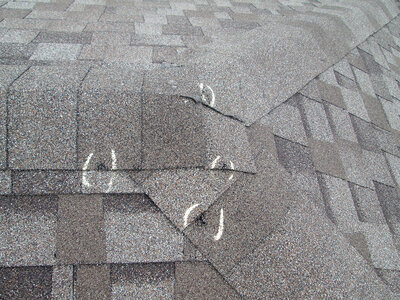
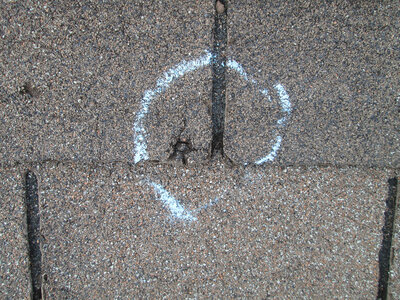
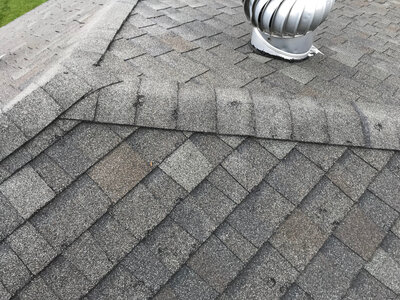
6 Signs of Roof Hail Damage
A powerful hailstorm can quickly inflict significant damage on your roof.
If you suspect your roof may have been affected, be on the lookout for these common signs:
- Dented Shingles. Hailstones can create small dents in your roof shingles.
- Cracked Shingles. Hail can crack your shingles, compromising their ability to protect your home from water damage.
- Granule Loss. Hail can strip away the protective granules on your shingles. Missing granules can reduce your roof's lifespan.
- Discoloration. Dents from hail damage are dark indentations. The dark dents are the result of the granule loss.
- Damaged Roof Components. Hail can damage other roof components, such as vents, pipes, and skylights.
- Roof Underlayment Exposure. Severe hail damage can penetrate the shingle's surface, exposing the roofing underlayment.
Do you see or suspect hail damage on your roof? If so, you should have a professional roofer inspect and assess the damage. Mighty Dog Roofing offers free inspections. Contact us online or contact your local Mighty Dog Roofing to schedule your free roof inspection.
How to Identify Hail Damage on Asphalt and Wood Shingles
Hail storm damage will manifest differently depending on your roof type. For asphalt shingles, the damage is more likely to result in granule loss, while wood shingles have their issues.
Asphalt And Composition Shingles Hail Damage
On asphalt shingles, hail storm damage to a roof most commonly manifests as granule loss.
Asphalt shingles are typically very tough and can withstand hail damage reasonably well. However, over time, the granules on the shingles can start to loosen and fall off. Granules are the small, pebble-like bits that make up the top layer of shingles and protect the asphalt beneath from UV rays and weathering.
Granule loss is more likely to occur on older roofs, as the granules can become loose with age. It's also more likely to occur on areas of the roof in direct sunlight, as the heat from the sun can cause the granules to loosen.
When hailstones hit the roof, the impact can dent and dislodge these granules, exposing the asphalt to the elements. Granule loss usually appears as bald spots on the roof. This damage can lead to leaks and other serious problems if left unaddressed.
If you suspect that your roof surface has suffered granule loss, look closely at the shingles. If you see any bald spots or areas where the granules are missing, it's best to have a professional inspect the roof and make repairs as soon as possible.
Wood Shingles Hail Damage
Wood shingles are more brittle than asphalt, making them more likely to crack or break when hail hits them. These cracks and breaks can allow water to enter your home, causing leaks and other damage. Cracks in wood shingles are more likely to occur near the edges, so be sure to check these areas carefully.
Cracks are relatively easy to spot in most cases. However, if you're unsure if you're looking at a crack, try looking at the shingle from different angles in direct sunlight. If you see light shining through, it's likely a crack.
How Does Hail Damage A Roof
As mentioned above, hailstorm damage to a roof most commonly manifests in the form of granule loss or dents. Granules are the small, pebble-like bits that make up the top layer of shingles and protect the asphalt beneath from UV rays and weathering.
When hail hits the roof, the impact can dislodge these granules, exposing the asphalt to the elements. Granule loss usually appears as bald spots on the roof. If left unaddressed, this damage can lead to leaks and other serious problems.
Other forms of hailstorm damage include cracks, splits, dents, and holes in shingles. These defects can also allow water to enter your home, causing roof leaks and further damage. The extent of the damage will depend on the roof type, the hail size, and a few other factors.
- Hailstone Size, Shape & Density. The size, shape, and density of the hailstones mainly determines the damage caused by hail. For example, large, round hailstones are less likely to cause roof damage than smaller, jagged ones. Hailstones that are soft and easily deform upon impact are also less likely to cause damage. Harder, denser hailstones are more likely to cause dents because they don't deform as easily.
- Type of Roofing Material. The type of roofing material you have will also affect the amount of damage sustained. For example, shingle roofs are more susceptible to hailstorm damage than tile or metal roofs. This is because shingles are made of a softer material that hailstones can easily damage. On the other hand, metal and tile roofs are more resistant to hail damage because they are made of harder materials.
- Age and the Condition of the Roof. Older roofs and roofs in disrepair are also more susceptible to hail damage. This is because older roofs have already been weakened by weathering and may not be able to withstand the impact of hailstones as well as a newer roof.
- Speed of the Wind. The wind speed can also affect the amount of damage sustained. For example, if the wind is blowing at high speed, it can cause hailstones to hit the roof with more force, causing more damage and deeper dents.
- Physical Barriers. Physical barriers can also help protect a roof from hail damage. For example, trees and other structures that are close to the house can provide some protection from hailstones.
Identifying Hail Damage To Your Roof From The Safety Of The Ground
The best way to inspect your roof for hailstorm damage is to do so from the safety of the ground. Binoculars can help you get a closer look at the condition of your roof. You should also take photos or videos of any roof damage you see. These can be helpful when filing a homeowners insurance claim.
If you don't have binoculars, you can try to inspect your roof puncture with a ladder. However, this is not recommended without proper training as it can be dangerous. If you do choose to inspect your roof from a ladder, make sure you securely place the ladder and that someone is holding it steady.
Once you're able to see your roof surface clearly, look for any dents, cracks, or bald spots on the roof. These will likely be the most visible signs of hailstorm damage. You should also look for any splits or holes in the shingles. If you see any of these, it's best to contact a professional roofing contractor for an inspection and repairs as soon as possible.
What Does Hail Damage Look Like On Gutters?
Gutters can also be damaged by hail. The most common type of damage is denting, which can cause the gutters to become misshapen and no longer able to drain water properly. In some cases, the gutters may even become detached from the roof.
Other signs of hail damage to gutters include cracks, holes, and leaks. If you see any of these, it's best to have a professional inspect the gutters and make repairs as soon as possible. Inefficient gutters can cause extensive damage to the roof, siding, and foundation of your home.
Damaged Siding
Siding damage can take a few forms, and for the most part, it should be resistant to hail damage, especially with proper installation and maintenance. However, if your siding is old or poorly maintained, it may sustain damage from hail.
On vinyl siding, hail damage is most likely going to look like chipped paint, cracks, and missing portions. While these chips are unsightly, they're also an opportunity for water and debris to enter your home, so it's best to have them repaired as soon as possible.
Hail can also damage wood siding, creating holes, dents, and cracks. Wood is, of course, more susceptible to water damage, and homeowners should resolve these issues urgently.
Damaged Windowsills/Casings
Windowsills and casings are also vulnerable to hail damage. The most common type of damage is chipping, cracking, or denting. In some cases, the glass itself may crack or break, though this is rare with modern glass.
If you see any damage to your windowsills or casings, cracks, missing portions, or other signs of hail damage after a storm, it's best to have them repaired as soon as possible. Window breaks can lead to insulation issues and water damage, not to mention an entry point for pests, so it's best to be proactive.
3 Things To Know Before Starting The Insurance Claim Process
Check your policy: Not all policies cover hail damage, and those that do may have limits on the amount they will pay.
Don't wait to file a claim: The sooner you file, the better. Many insurance policies have time limits for filing claims, so it's essential to act quickly.
Gather evidence: Take pictures of the damage and keep any receipts for repairs. This will help to substantiate your claim.
Hail damage can be costly to repair, but with proper roof insurance coverage, you can get the repairs you need to protect your home. If you suspect that your home has sustained hail damage, contact your insurance company and have a professional inspect the damage as soon as possible.
With Mighty Dog Roofing's customer vault, we keep current photos of our client's roof and home with drone footage, so in the event of hail damage, you have a timestamp to show your home before and after the damage.
1. The Insurance Process Is Muddy And Confusing
While some insurance companies make it seem like the claims process is straightforward, the reality is that in some cases, it's anything but that. Our team aims to take some of this burden off our clients by providing the best information, quotes, and inspections possible.
While most insurance companies will do all they can to avoid a payout, even they can't dispute concrete evidence of damage. So, if you're aiming to get your roof surface repaired after a big storm, make sure you take plenty of photos with a timestamp as soon as you notice the damage. It's also a good idea to take pictures throughout the year and to mark any big storms on your calendar, with evidence if possible.
If you are able, spring for a roof inspection from a roofer you trust. This can help move the process along more smoothly. While insurance appraisers are trained to spot damage, they're also proficient in attributing damage to poor installation, wear and tear, and poor maintenance. A thorough roof inspection might give you the leverage you need to get paid.
2. Don't Sign Any Paperwork Until Your Roof Insurance Claim Is Approved
We've been in the roofing industry for decades, and we're aware of the reputation some roofing companies have. We encourage our clients to avoid signing a contract with us until they're sure their insurance company has approved a claim and they have an estimate for payment.
Once you've filed your claim, an insurance adjuster will come out to inspect the damage. They may try to pressure you into signing paperwork that releases them from any responsibility for the repairs. Therefore, it's crucial not to sign anything until you're sure that your claim has been approved.
The insurance company may also try to lowball you on the roof repair estimate. If you feel like the estimate is too low, get a second opinion from a reputable roofer who knows the cost of repairs in your area. In some cases, the insurance company may even try to deny your claim outright. If this happens, you can appeal the decision, but it's best to wait until this process is settled before agreeing to anything.
3. Insurance Adjusters Sometimes Make Mistakes
Even trained professionals can make mistakes, and insurance adjusters are no exception. In some cases, they may overlook roof damage or underestimate the cost of repairs. If you suspect that your insurance adjuster has made a mistake, it's a good idea to request a second adjuster be sent out to take a look at your property. If that adjuster also disagrees with your claim, in some cases, the opinion of a licensed roofing contractor can sway the insurance company to cover a claim, though this is in no way a guarantee.
It's also important to remember that insurance companies are businesses, and their bottom line is their priority. As a result, they may try to lowball you on the repair estimate or deny your claim. If this happens, try to appeal against the decision rather than just accepting the first offer from your insurance company.
FAQ
Can Hail Damage To A Roof Be Repaired?
In most cases, a good roofer can repair hail damage to a roof in a straightforward process. For asphalt and wooden shingles, the process involves taking off the damaged roof shingles and replacing them with new ones that match the rest of your roof surface. In some cases, water damage from broken shingles requires additional repairs to the roof deck or sheathing. For tile roofs, the process may involve simply replacing a few tiles here and there. Depending on the size of the damaged area, though very rare, an entire section of the roof may need to be replaced.
What Happens When You Ignore Hail Damage Repairs?
Hail damage that is left unrepaired can lead to several different problems down the line. Water damage is the most common problem, as hail-damaged shingles are more likely to leak. This can cause mold and mildew to grow in your attic and eventually cause rot and decay of the roof deck or sheathing. It can also cause pooled water from ice dams that can cause electrical issues and flooding, and with enough time, the roof could cave in.
It's essential to properly care for your roof by repairing any hail damage as soon as possible. By doing so, you can avoid any of the problems listed above and extend the life of your roof surface.
